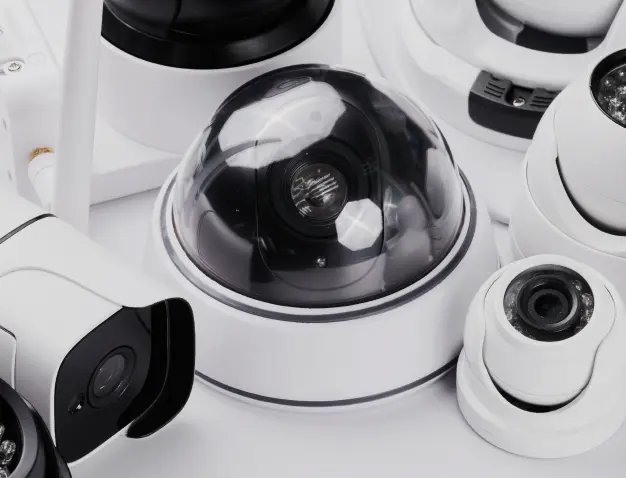The deployment of commercial security cameras represents a pivotal aspect of contemporary surveillance systems, crucial for safeguarding businesses and ensuring comprehensive asset protection. The installation and optimization of these cameras demand a meticulous approach, commencing with a comprehensive assessment of the premises to determine optimal camera placements. Assessing key areas prone to vulnerability, such as entry points, high-traffic zones, and critical assets, is fundamental. Leveraging the latest technological advancements in surveillance, including high-resolution cameras with superior image quality and wide-angle lenses, ensures enhanced coverage and clarity. Moreover, the choice of camera type—ranging from dome, bullet, to PTZ Pan-Tilt-Zoom—must align with specific surveillance requirements, whether for indoor monitoring or outdoor surveillance in varying lighting conditions.
 Equally critical is the consideration of lighting and environmental factors that can significantly impact camera performance. Ensuring adequate lighting in dimly lit areas and mitigating potential glare or overexposure from direct sunlight empowers cameras to capture clear, usable footage across all conditions and click here https://www.securedbypremier.com/san-antonio/security-systems/. Additionally, weather-resistant housing for outdoor cameras shields them from harsh environmental elements, prolonging their longevity and functionality. Regular maintenance and cleaning schedules for cameras, including lens cleaning and firmware updates, are imperative to sustain optimal performance and prevent degradation over time. Furthermore, the integration of commercial security cameras with advanced analytics and monitoring software amplifies their efficacy. Implementing intelligent features such as motion detection, facial recognition, and automated alerts enables proactive surveillance, alerting security personnel in real-time to potential security breaches. Coupled with cloud-based storage solutions, these systems offer the advantage of remote access, allowing authorized personnel to monitor feeds from any location, thereby enhancing overall situational awareness and response capabilities.
Equally critical is the consideration of lighting and environmental factors that can significantly impact camera performance. Ensuring adequate lighting in dimly lit areas and mitigating potential glare or overexposure from direct sunlight empowers cameras to capture clear, usable footage across all conditions and click here https://www.securedbypremier.com/san-antonio/security-systems/. Additionally, weather-resistant housing for outdoor cameras shields them from harsh environmental elements, prolonging their longevity and functionality. Regular maintenance and cleaning schedules for cameras, including lens cleaning and firmware updates, are imperative to sustain optimal performance and prevent degradation over time. Furthermore, the integration of commercial security cameras with advanced analytics and monitoring software amplifies their efficacy. Implementing intelligent features such as motion detection, facial recognition, and automated alerts enables proactive surveillance, alerting security personnel in real-time to potential security breaches. Coupled with cloud-based storage solutions, these systems offer the advantage of remote access, allowing authorized personnel to monitor feeds from any location, thereby enhancing overall situational awareness and response capabilities.
Beyond mere surveillance, the strategic positioning of signage indicating the presence of cameras acts as a powerful deterrent against unauthorized activities, dissuading potential intruders and reinforcing a sense of security among employees and visitors. Compliance with legal and ethical standards concerning privacy rights and data protection is paramount, necessitating adherence to regulations governing surveillance practices in commercial settings. In conclusion, the installation and optimization of commercial security cameras demand a holistic approach that encompasses meticulous planning, technological innovation, environmental considerations, and compliance with regulations. By employing cutting-edge surveillance technologies, strategic placement, and adherence to best practices, businesses can fortify their security infrastructure, deter potential threats, and foster a secure environment conducive to productivity and peace of mind for all stakeholders involved. The data collected by these cameras serves not only for incident resolution but also as a valuable tool for analyzing patterns, identifying potential weaknesses in security protocols, and implementing necessary enhancements to further fortify the business’s safety measures. Overall, commercial security cameras play an indispensable role in proactively maintaining a secure environment, instilling confidence among employees, customers, and stakeholders while safeguarding valuable assets and operations against potential risks and disruptions.